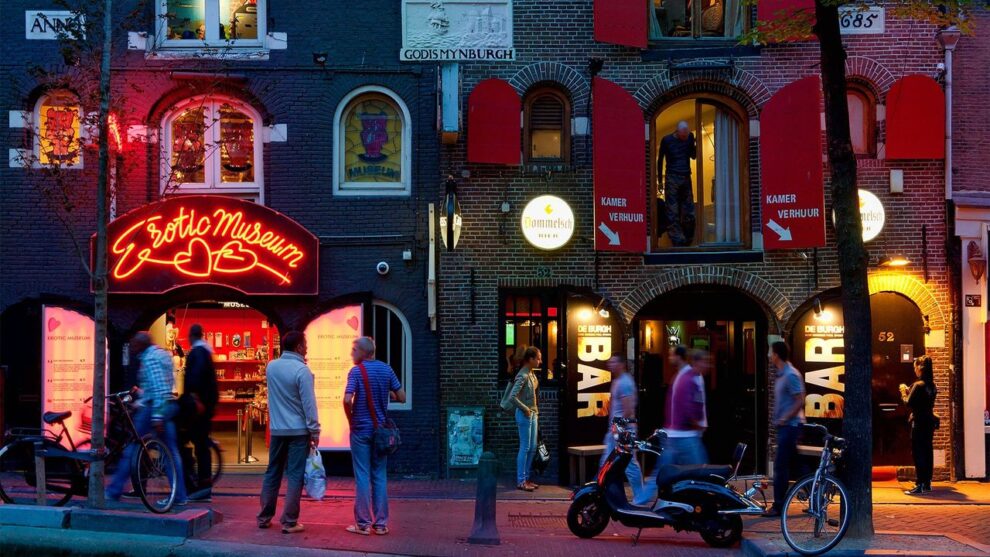The Dutch capital is only home to about 800,000 people but draws up to 20 million tourists a year. Now, new policies are encouraging sustainable tourism to everyone.
On a recent weekday, sunlight streamed through the clouds high above Amsterdam, casting rays on the city’s gabled buildings, its arching bridges and a sign in English asking tourists to please not urinate into its canals.
The Dutch capital is one of the most-visited cities in Europe, with its 800,000-person population welcoming up to 20 million tourists a year. But despite its world-class museums, achingly beautiful green spaces and tranquil waterways, Amsterdam has also earned a raunchy reputation as Europe’s most liberal party capital – and now, the city is trying to clean up its image.
A new series of measures is being implemented to “maintain the quality of life in Amsterdam” while “working to prevent tourism that causes nuisances”. The city council banned cruise ships from its city centre in July to prevent overtourism in its most popular areas. In May, it banned smoking cannabis in its red light district. And in March, it launched a “stay-away” digital campaign, targeting men aged 18 to 35 in the UK, attempting to curb visitors coming for drugs, alcohol and sex.
“Visitors will remain welcome, but not if they misbehave and cause nuisance,” said Deputy Mayor Sofyan Mbarki in a statement. Many locals are also fed up with disruptive tourists and endless crowds, and billboards featuring photos of residents now remind visitors “We Live Here“.
Of course, the Dutch capital has always been much more than just a place to let loose. Here’s how to experience the best of Amsterdam through creative and sustainable activities that benefit both visitors and Amsterdamers.
Brown bars and borrels
According to locals, enjoying a beer at a bruin cafe (brown bar) with borrels (small spirits) and borrelhapjes (fried snacks) is one of the most authentic Amsterdam experiences you can have. These historic drinking holes – like Café de Druif, which has been serving locals for roughly 400 years – offer a cosy, traditional feel. The name “brown bar” refers to the brown-panel interior each pub has in common, and there is even a growing movement to protect their classic decor.
Despite trendier bars and restaurants popping up, Amsterdam local Mia Bekedam says brown bars will never go out of style because they always “stay original”.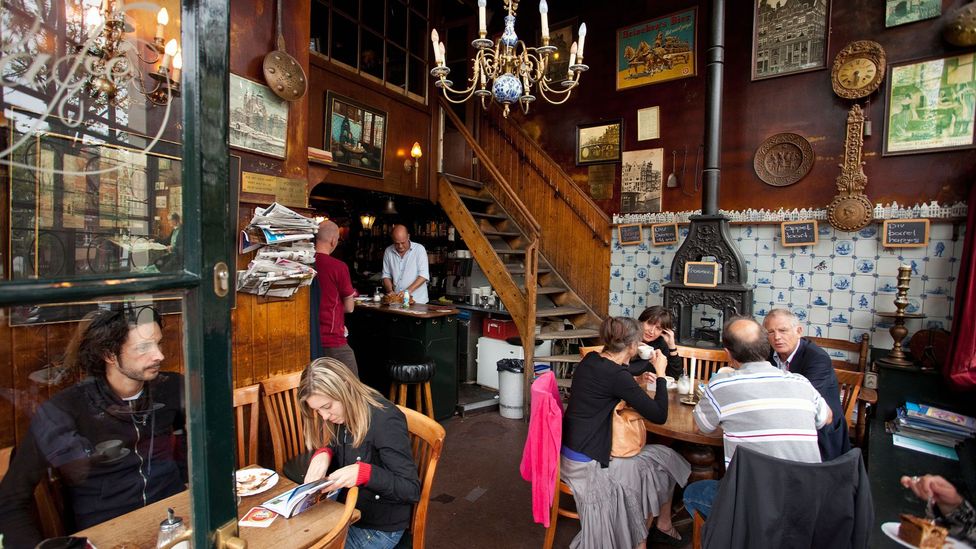
Amsterdam’s fabled brown bars are akin to old-school neighbourhood dive bars (Credit: frans lemmens/Alamy)
“I think this is just an amazing time to be at a beautiful spot in Amsterdam without having to [wait in long] lines,” she added. Bekedam says being surrounded by living history at brown bars makes everyone feel at home, whether they are regulars or newcomers. “You can find every slice of human and Amsterdamer there,” she said.
Aside from Café Hesp, in Amsterdam’s lively Oost district, her other favourite brown bar is Café Krom. “They keep it traditional – there’s no music, they’re still in white shirts behind the bar – it’s just a nice, little, quaint place to have a beer.”
Cycling tours and surrounding cities
The Netherlands – and Amsterdam in particular – is one of the world’s most bike-friendly destinations. The city has roughly 400km of bike paths and is still adding more, as a majority of people bike to and from school or work. Cycing is not only a great way to get active but also a sustainably way to see the city.
Stephan Van Der Meer is the owner of Mike’s Bike Tours, and he says he likes to take visitors cycling on under-the-radar routes that surprise them with a different side of Amsterdam. One of his favourite journeys is up to the NDSM Wharf in Amsterdam Noord – a neighbourhood that was once a shipyard and is now teeming with street art, performance artists, outdoor markets and local vendors.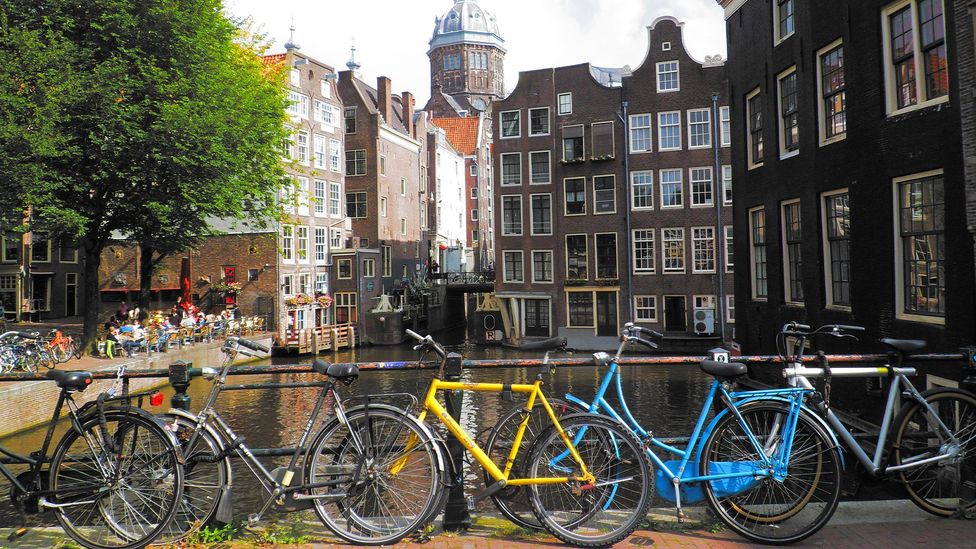
Amsterdam is one of the world’s most bike-friendly destinations (Credit: Anna Dorca/Alamy)
“It’s a very creative, different area from the cute, beautiful city centre of Amsterdam,” said Van Der Meer, who has lived in Amsterdam for 16 years.
While Van Der Meer has mixed feelings about the city’s new tourism policies, he said he looks forward to “working together with the government to see if we can spread out people a little more… to also show other parts of the Netherlands”. There are also a number of bikeable cities near Amsterdam that Van Der Meer recommends visiting, including his hometown of Gouda, and Utrecht.
Museums and galleries
Amsterdam is renowned for its many world-class museums and galleries. But while people may book their tickets to the always-popular Anne Frank House or Rijksmuseum months in advance, the city is also home to lots of less-crowded attractions. Museum Van Loon is one such place – a preserved 17th-Century canal house that features contemporary art exhibition.
In contrast to some of Amsterdam’s largest museums, Museum Van Loon offers a “very intimate, very personal” experience, according to Gijs Schunselaar, the museum’s director. Visitors are pleasantly surprised with the “homey atmosphere” as they peruse the historic rooms and gardens of the house, he said.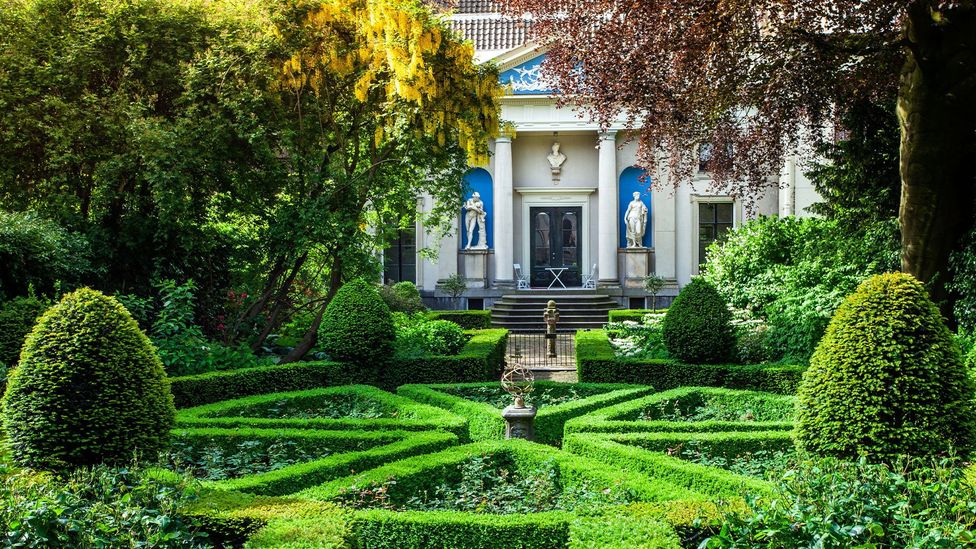
Museum Van Loon is a historic home and garden that doesn’t have the crushing crowds of some of Amsterdam’s other attractions (Credit: John Michaels/Alamy)
Schunselaar said that touring Amsterdam’s many off-the-beaten-path attractions gives visitors a chance to slow down and experience the culture that could be overlooked on a “bachelor party” or a whirlwind weekend visit. “Tourism has its pros and cons, but obviously we want to welcome as many tourists to the museum to enjoy the collection and what we have to offer. It’s all about finding the right balance.”
“A lot of other lovely museums are located in Amsterdam,” added Kelly Schenk, press officer at the Rijkmuseum, “such as OSCAM, the Jewish Museum, Our Lord in the Attic Museum, Museum Van Loon and Museum Het Schip. They each show a different side, and a different part of the history of Amsterdam.”
There are even more galleries to explore when doing day trips from Amsterdam. Schenk recommends the Kröller-Müller Museum in Otterlo, which has one of the largest Van Gogh collections in the world “and a fantastic sculpture garden”. In addition, the Boijmans van Beuningen Depot in Rotterdam is the first publicly accessible art storage facility, with an “amazing rooftop view”.
Parks, picnics and gezellig
With more than 30 parks and gardens throughout the city, green space is easy to find in Amsterdam. Amsterdamse Bos (Amsterdam Forest) is the city’s largest recreational area – more than three times the size of Manhattan’s Central Park. Visitors can rent bicycles or canoes, bring kids to the playgrounds, to check out the goat farm or ride the tram. There’s also an open theatre, with a full schedule of summer performances.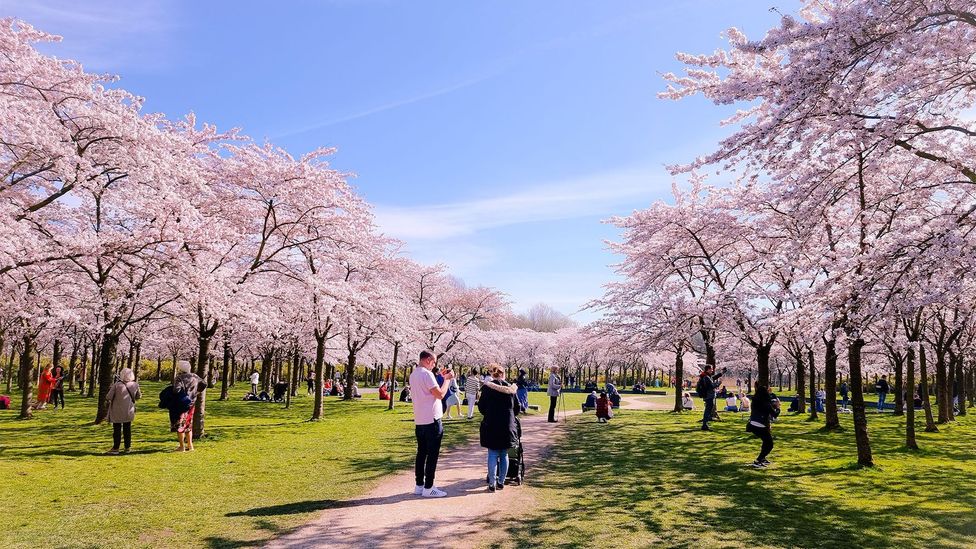
Amsterdamse Bos is more than three times larger than Manhattan’s Central Park (Credit: Baarssen Fokke/Alamy)
According to Pieter Haasnoot, Amsterdam Forest’s public media manager, the forest is largely focused on protecting and preserving local ecosystems and biodiversity. Forest staff balance nature conservation with community engagement, including an expanding volunteer system. Haasnoot hopes tourists are able to see and experience the importance of being outdoors in Amsterdam. The forest receives 7.5 million visitors a year, and that number is growing, he said.
The sheer size of Amsterdam Forest makes it a perfect alternative to popular tourist green spaces like Vondelpark. It has something for everyone, from sports fields to picnic areas, and easily encourages gezellig (the joy of togetherness), an important part of the Dutch lifestyle. Central to gezellig is sense of cosy conviviality, so pack a blanket, bring some snacks and call some friends (or make new ones).
As Amsterdam moves away from its “anything-goes” reputation, there has never been a better time to rediscover its fabled brown bars, sprawling outdoor spaces and the many spots that have lured travellers long before this cultural hub was a party hub.
Source: British Broadcasting Corporation































